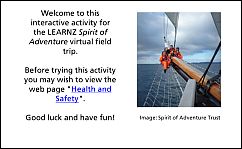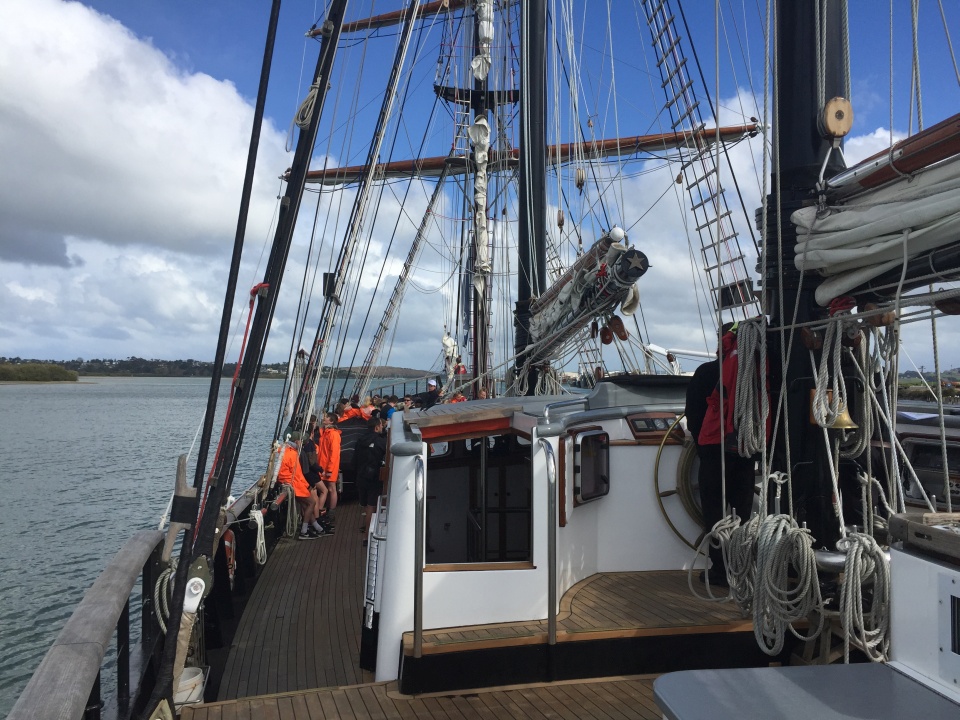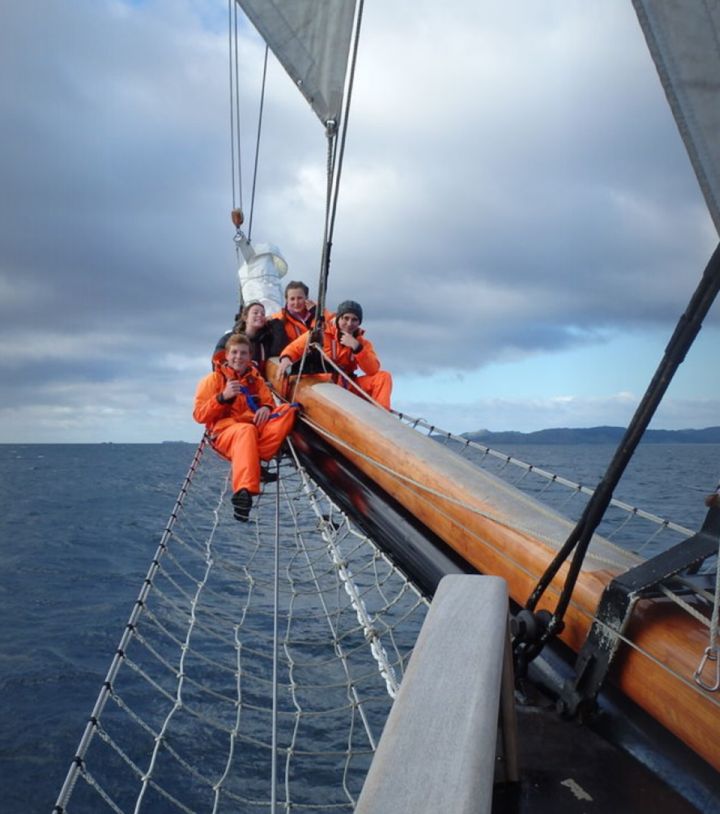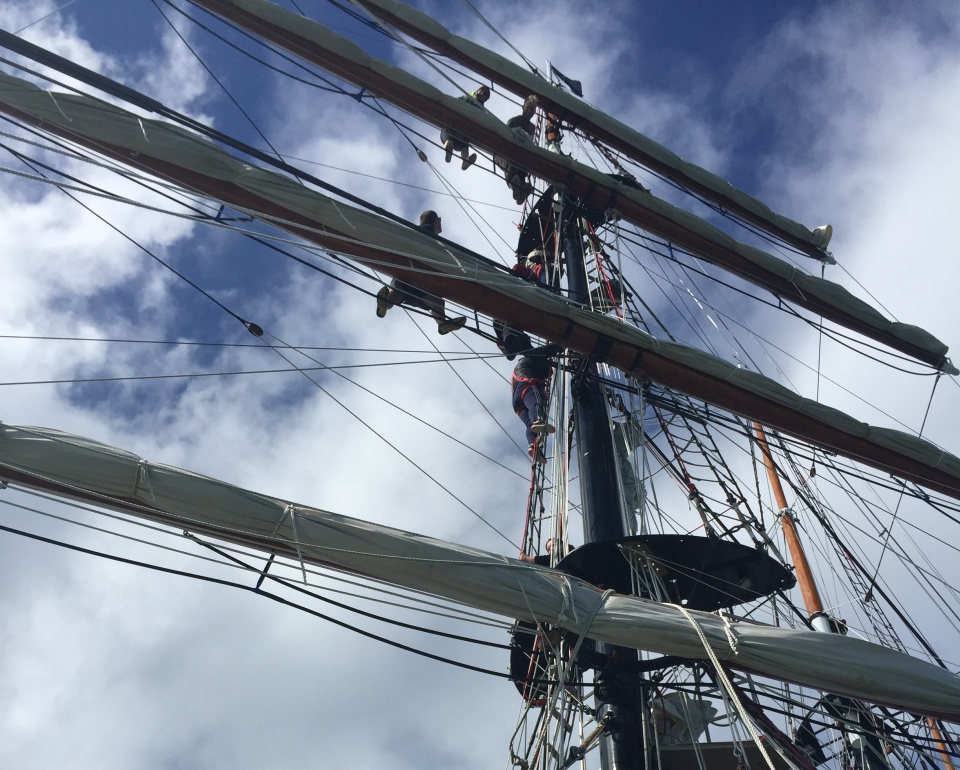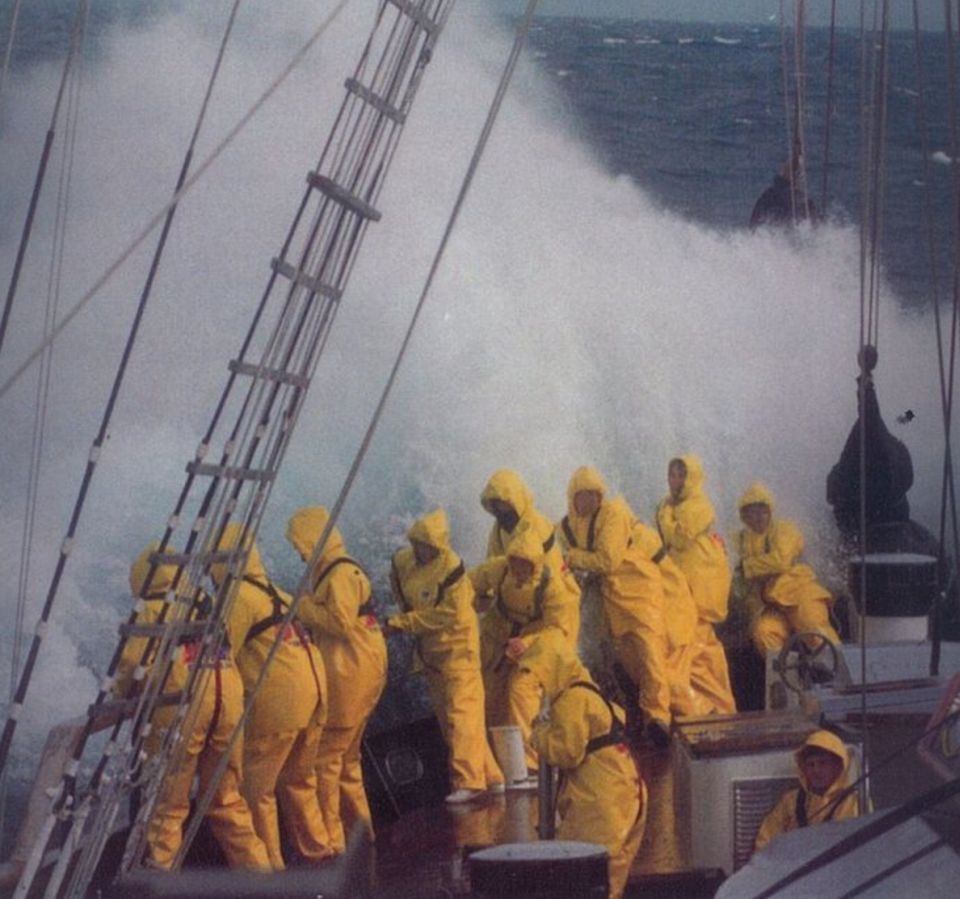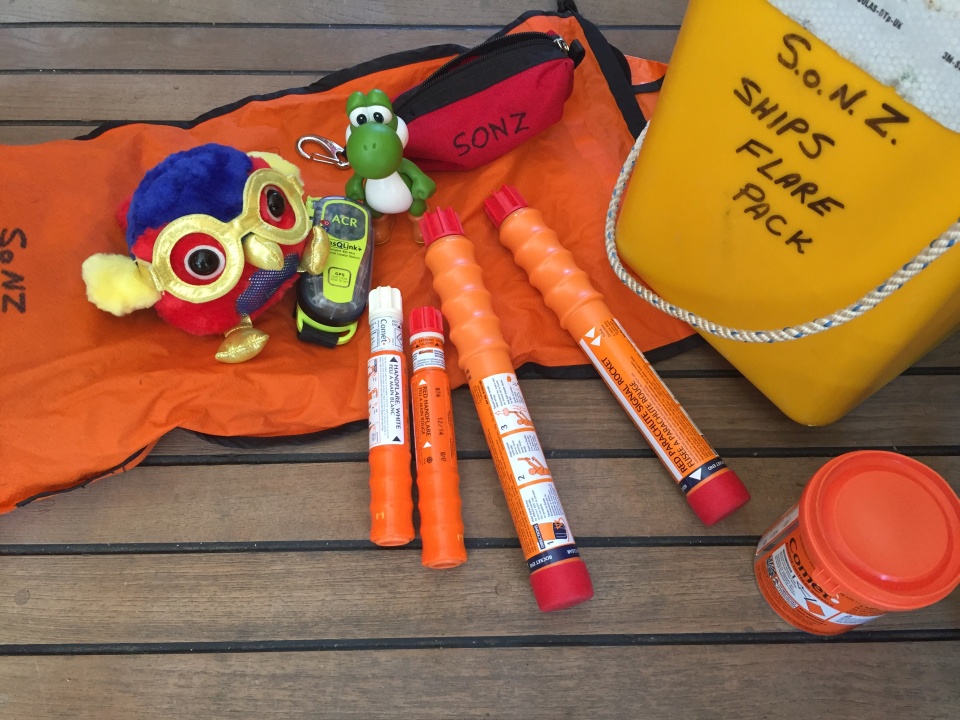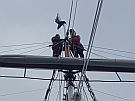For the health and safety of everyone on a sailing vessel there are a few standard guidelines that must be followed. Health and safety is everyone’s responsibility.
Some common risks are described below along with methods for reducing these risks.
Hypothermia
Hypothermia is a risk when at sea. Hypothermia is the lowering of the body’s core temperature. While skin and tissues cool rapidly in cold water, it generally takes 15-20 minutes for the temperature of internal organs to begin to drop. Once your body’s core temperature begins to fall, it does so steadily. Unconsciousness can occur when your core temperature drops below 32°C and death usually occurs when your core temperature reaches approximately 26°C.
Prevention
Hypothermia can usually be avoided by using common sense. As with most situations, prevention is the best cure. Warm woollen jerseys, hats, wind breakers or wet weather gear are essential on board or ashore in cold or potentially cold conditions.
Be aware that sea sickness makes people particularly susceptible to hypothermia because of its debilitating process, and the inability to retain nourishing food and drink.
Overboard
If you find yourself in the water and supported by a life jacket, curl up and hug knees against the body. Do not take off any clothing, shoes etc (except heavy sea boots). Huddle together in groups to keep warm.
Fire
Even today, more ships are lost every year through fire than any other cause. Three things are necessary to sustain a fire: HEAT, FUEL and OXYGEN. Without one of these, a fire will go out. A fourth ingredient CARELESSNESS applies as fires are better avoided than extinguished.
Every person on board must be on the lookout to prevent fires and be prepared to deal with them quickly should they occur. If a fire is discovered raise the alarm by shouting FIRE and activate the ship’s alarm bells. Use the nearest extinguisher to put out or contain the fire.
Evacuate immediately when:
- Extinguisher is empty
- Smoke becomes dense
- Heat becomes too great
- Relieved by a crew member
Close all cabin and watertight doors behind you. Go to the aft deck muster station and wait quietly. All other participants and crew should choose the fastest exit to the aft deck muster station when they hear the alarm bells.
Man Overboard
Clearly it is better to avoid this than cure it! This is why no one is permitted to sit on the rail around the ships side or run while on deck.
Life jacket harnesses must be worn on deck in bad weather and at night with strobes. The most likely reason for failing to rescue someone in the water quickly enough is through losing sight of them - a head is very small, and in choppy sea it is invisible at 50 metres. Speed of reaction is therefore vital.
What to do
Witness: Raise the alarm, shout - man overboard! Throw nearest lifebuoy to person. Press the general alarm button. Aft deck: Release the Man Overboard life raft and danbuoys. Throw lifebuoys towards the person, not at them. Mate/Watch Assistant: Send extra lookouts up the mast to keep the person in sight. Call the Master immediately if not already on deck. Everyone else: Go to muster stations, stay calm, listen quietly and await instructions. Watch Assistants report participants/crew numbers to the Master.
Abandon Ship
In the unlikely event of a serious fire which cannot be contained, or if the ship suffered damage which caused her to take on so much water that she cannot remain afloat, it might become necessary to abandon ship.
The order to abandon ship is given only by the captain or person in command of the vessel.
What to do
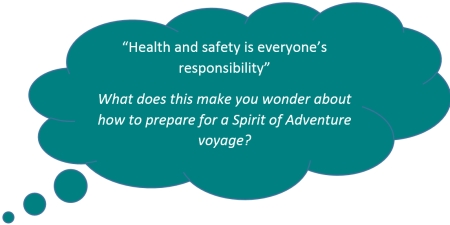 If you hear rapid ringing of the ship’s alarm bells:
If you hear rapid ringing of the ship’s alarm bells:
- Go immediately to the aft deck muster station
- Head count by Mate or Watch Assistant, report result to person in charge
- Designated crew/participants will distribute life jackets
- Put your life jacket on and fasten tapes securely
- Stay together in watches - STAY CALM Wait and listen for instructions.
Safety equipment
The ship carries five (4 x 25 and 1 x 8 person) life rafts. This means that two rafts are more than sufficient for everyone on board. If the ship were to sink, the rafts and life jackets would automatically float free and inflate ready for use. Onboard there is also a VHF radio, satellite phone, modern navigation equipment and emergency locator beacons.

